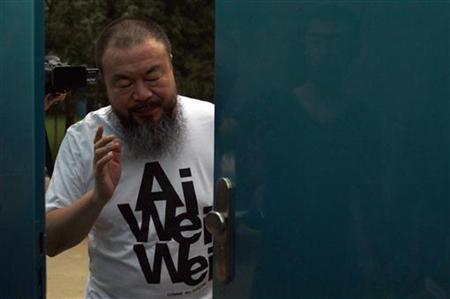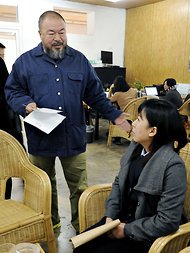Ai Weiwei fined 2,400,000.
(or is it “nearly 2,000,000?” –or is it 15 million yuan”)
So what’s up with everyone’s math? Is this such a difficult calculation that Huffington Post and Reuters can’t sort out what the $ equivalent of the 15,000,000 RMB fine is? Alas.
And anyway, I’ve been waiting for some time now to find out what this amount would be. One wonders how they came up with 15,000,000. In fact, one wonders how they would use it, if in fact he decides to pay it–basic infrastructure for Cao chang di 草场地? But mostly, one wonders what the impact will be on the artistic community at large, being the other Chinese artists (or is that, ALL Chinese artists?) suddenly wondering how much THEY owe in income taxes. As I’ve said before, this strikes me as more or less genius maneuver by the Chinese government, a play to make Ai into something like Bernie Madoff (in the eyes of less well-heeled Chinese populace).
or, a genius idea which seems to be backfiring badly. Ai’s microblog (a wonder that that’s still up) is taking in donations, and his Twitter is alive with the complicated issue (?) of whether he should take the money outright, or just accept a “loan”. The conversation on Twitter, anyway, clearly demonstrates that loan, gift, or what have you the contributor are taking their own action as a mode of protest. THe conversation is also keeping a running tally of donations (2.5 million as I type). Thus, Chinese government attempts to outsmart contemporary political dissent with crafty legal/economic maneuver and gets outmaneuvered by same dissent in the form of, of all things, a high-profile sympathy fund for the very individual they’re trying to shut down. There are times when I wonder if someone in Beijing isn’t playing this all to his/her own purpose, deliberately taking the wrong steps.
Regardless, its plain to see that post-incarceration Ai Weiwei continues to be just as much of a conduit for discussion of freedom of expression as ever. He is Art Politicized completely, even beautifully. No better example of that than in the image, NYT, below; if something so banal as a man going to pay his taxes can be so fraught with meaning, I’d say winner (Ai) takes all.


